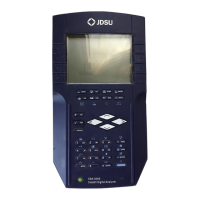Application Notes: Proofing and Testing
335
A
periods & collisions, and see ingress in the data packet without taking the
service off-line.
Refer to the Feb. ’99 issue of Acterna’s bi-annual newsletter, Wavelengths.
FCC Title 47 Code of Federal Regulations, Subpart K,
Section 76.605(a)
Records must be kept on file for 5 years and they must be open to the FCC
or the local franchiser upon request. Rule 76.614 states that leakage logs
must be kept on file for 2 years for a typical CATV system, but 5 years for
systems that don’t fall under normal FCC regulations. This would include a
system with less than 1000 subscribers. This system would not be
considered a typical CATV system.
You must select 6 widely separated test points for the first 12,500
subscribers and 1 extra test point for each increment of 12,500 subscribers.
At least one third of the test points shall represent subscribers most distant
from the headend.
Subsections 76.605 (a) 3, 4, and 5 require tests to be done on all NTSC
channels.
All other subsections require 7 channels for 400 MHz systems and 1 extra
channel for every increment of 100 MHz.
Audio/Video Tests [76.605(a)(2)]
The audio carrier will be 4.5 MHz above the video ± 5 kHz.
24-hour Variation Test [76.605(a)(3,4,5)]
Measurements shall be made every 6 hours (intervals > 5 and < 7 hours) in
January or February and July or August. This represents the coldest and
hottest months. So we have a 2 hour window every 6 hours, and a 2 month
window every 6 months to complete these tests.
PROOFING AND TESTING

